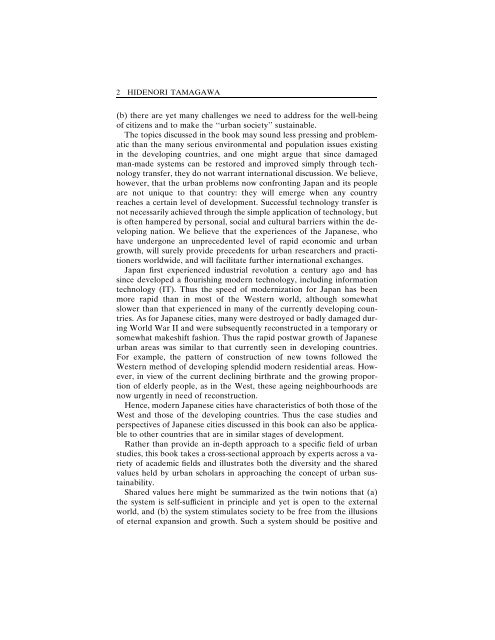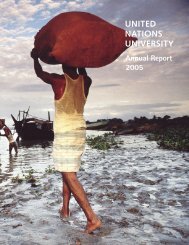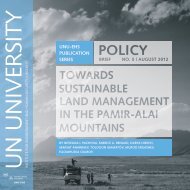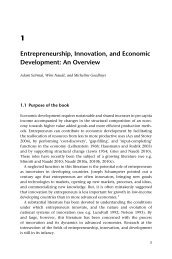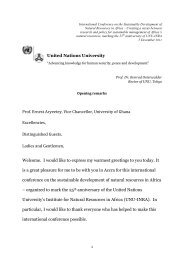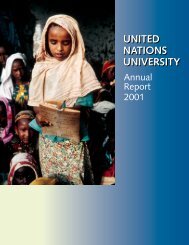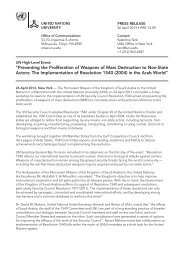Edited by Hidenori Tamagawa - United Nations University
Edited by Hidenori Tamagawa - United Nations University
Edited by Hidenori Tamagawa - United Nations University
You also want an ePaper? Increase the reach of your titles
YUMPU automatically turns print PDFs into web optimized ePapers that Google loves.
2 HIDENORI TAMAGAWA(b) there are yet many challenges we need to address for the well-beingof citizens and to make the ‘‘urban society’’ sustainable.The topics discussed in the book may sound less pressing and problematicthan the many serious environmental and population issues existingin the developing countries, and one might argue that since damagedman-made systems can be restored and improved simply through technologytransfer, they do not warrant international discussion. We believe,however, that the urban problems now confronting Japan and its peopleare not unique to that country: they will emerge when any countryreaches a certain level of development. Successful technology transfer isnot necessarily achieved through the simple application of technology, butis often hampered <strong>by</strong> personal, social and cultural barriers within the developingnation. We believe that the experiences of the Japanese, whohave undergone an unprecedented level of rapid economic and urbangrowth, will surely provide precedents for urban researchers and practitionersworldwide, and will facilitate further international exchanges.Japan first experienced industrial revolution a century ago and hassince developed a flourishing modern technology, including informationtechnology (IT). Thus the speed of modernization for Japan has beenmore rapid than in most of the Western world, although somewhatslower than that experienced in many of the currently developing countries.As for Japanese cities, many were destroyed or badly damaged duringWorld War II and were subsequently reconstructed in a temporary orsomewhat makeshift fashion. Thus the rapid postwar growth of Japaneseurban areas was similar to that currently seen in developing countries.For example, the pattern of construction of new towns followed theWestern method of developing splendid modern residential areas. However,in view of the current declining birthrate and the growing proportionof elderly people, as in the West, these ageing neighbourhoods arenow urgently in need of reconstruction.Hence, modern Japanese cities have characteristics of both those of theWest and those of the developing countries. Thus the case studies andperspectives of Japanese cities discussed in this book can also be applicableto other countries that are in similar stages of development.Rather than provide an in-depth approach to a specific field of urbanstudies, this book takes a cross-sectional approach <strong>by</strong> experts across a varietyof academic fields and illustrates both the diversity and the sharedvalues held <strong>by</strong> urban scholars in approaching the concept of urban sustainability.Shared values here might be summarized as the twin notions that (a)the system is self-sufficient in principle and yet is open to the externalworld, and (b) the system stimulates society to be free from the illusionsof eternal expansion and growth. Such a system should be positive and


